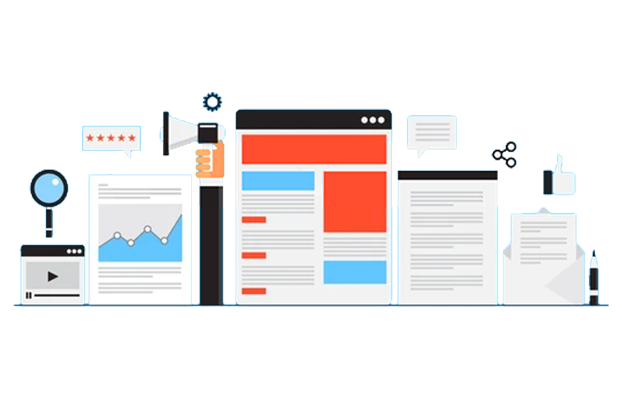In the business world, the significance of making operations efficient and organizing workflow can never be highlighted too much. All time matters, and small inefficient actions of our daily activities may lead to high levels of leakage of money.
Identification and management of these concealed inefficiencies are of critical importance in attaining high productivity and competitive advantage in the current dynamic market.

Drawbacks of the Traditional Collaboration
# Excel's Limitations
Although Excel is a powerful tool for data analysis, it is not designed for team projects. The design doesn’t cater to effective simultaneous edits or real-time updates. This limitation causes a torrent of emails with attachments and ultimately to so many copies of the same document. A lot of time is spent on teams finding the latest document version, slowing down the decision-making process.
# Reminders and Task Management
Most of the traditional approaches entirely rely on emails for delegating tasks as well as sending reminders. This manual system of task management is not only very time-consuming but also introduces a high rate of errors and miscommunication. In the absence of a centralized and visible system, tracking task progress is a task in itself, leaving managers and team members with no idea of the status of the project.
# Challenges with Time Zones
Global teams also have the additional issue of time zone differences. Lacking collaboration tools that are designed to support asynchronous work, the team members can be left in a state of dependence and impasse. Such conditions can lead to people being forced to work odd hours that can disrupt a personal schedule and eventually negatively affect the work-life balance.
Overview of Modern Collaboration Tools
The development of modern collaboration tools has been one of the fundamentals in successful teamwork, communication, and project management. These instruments have brought a new era of the digital era from email chain and physical meeting constraints to digital dynamic solutions with promised real-time engagement and flexibility.
# From Tradition to Innovation
The days are gone when cooperation was within the boardroom meetings and teeming email boxes. Instead, a set of high-tech software and platforms have come up to suit the lifestyle of the hybrid work of the present day. The transfer is not only an exchange of tools but a radical transformation of the way we treat work itself. Using these latest solutions, companies can develop a culture of dynamic teamwork without regard to space.
# Breaking Down Barriers
The real strength of current collaboration tools is in their capability to overcome geographical limitations, unites groups from different cities, countries, and even continents. These tools come with features of instant file sharing, real-time communication, and complete project management functionality that make every team member an active participant in the workflow irrespective of their geographical location. Such connectedness creates an integrated and efficient workspace where the decisions are made quickly and the projects are not delayed.
# Flexibility is Very Important
For this purpose, modern collaboration tools are irreplaceable allowing teams to remain connected, on the same page, and productive. The tools’ flexibility promotes the dynamic nature of modern work practices, ensuring that the productivity and innovation of the businesses remain high. Through the adoption of such digital solutions, firms can improve the effectiveness of their operations and develop a more robust and flexible organizational culture.
The Main Advantages of Web Collaboration Tools
Capturing the essence of these benefits, we synthesize a persuasive narrative of how online collaboration tools represent more than technological innovation but the driver of change for business operations, communication, and data security.
# Saving Time and Resources
The platforms bring a radical change of efficiency by reducing hours spent on emails and searching for information. Particularly, firms that implement document collusion software experience a spectacular cut in the time-consuming task of compiling feedback and comments, that is, freeing up plenty of time to be used in more strategic ways.
# Boosting Productivity and Communication
These tools are about refining the workflow and strengthening team interaction. This is essential, especially for teams that are geographically spread, as the tools are designed to facilitate smooth communication and collaboration. The yielded more efficient processes give the teams power and thus improve the overall productivity and create a more team-like environment.
# Enhancing Security and Data Management
Security in the domain of cloud collaboration is crucial. Security is one of the core aspects of top-tier platforms and they are created with strict compliance standards ensuring authorized access to sensitive information is protected. Data integrity and secrecy are pivotal qualities of this security framework, which makes the digital collaboration space safe.
SharePoint as an Overview Collaboration Tool
The integration of SharePoint with Microsoft products is revolutionary. SharePoint provides seamless synchronization with Office apps, Outlook, and Teams to ensure that documents, schedules, and communications always remain synchronized. This interfacing obliterates the silos between different tools, enabling a seamless flow of information devoid of gaps.
# Automated Alerts and Advanced Task Management
The real point of strength of SharePoint is its fairly advanced system of task management. Automated feature allows users to be always on top of deadlines without even having to keep on manual tracking. This automation goes into the workflow capabilities of the platform, where tasks are not only assigned but updated dynamically, therefore leading to a well-run project management process, which ensures efficiency.
# A Unique Proposition
Most of the collaboration tools are promoted as tools for better communication and team coordination – SharePoint offers a lot more, among them, a central hub for storing documents, intranet site setup, and custom application integration. This is more than just cooperation, it provides an individualized service that fits the requirements of any organization.
In addition, the data security and permissions settings of SharePoint are a good point, which give thorough control over only those people, who can access, change, or view sensitive information. This is a crucial aspect for such organizations as they work with confidential data and need to comply with strict regulatory requirements.
Challenges and Considerations in Implementing Collaboration Tools
# Integration and User Adoption
The attainment of true harmony between new collaboration platforms and an organization’s already-established digital framework is important. This not only streamlines the process but also makes sure that employees are most likely going to take on the new technology. Yet, new methods are prone to be resisted as old habits die hard and accustomed systems are crucial. This resistance can be overcome by presenting obvious benefits and offering strong support during the transition stage.
# Training and Consistency
A learning curve is experienced with the use of any new tool. The proficiency of all team members in the tool is a necessity for its success. This calls for extensive training programs that are customized to different levels of skill in the team. In addition, all departments and projects should consistently use the tool to avoid fragmentation in communication and process management. Setting clear rules and standards for tool application promotes consistency and increases the tool’s performance.
Picking the Right Collaboration Tool
A strategic approach is necessary when choosing an appropriate collaboration tool for your organization. Here's how to navigate this decision:
# Assess Your Needs
Start by knowing the particular challenges and needs that your team is having. Determine if your focus is on communication improvement, project management, document sharing, or these three.
# Scalability
The tool you pick has to scale with your business.It should have room for growth in users and workload without sacrificing performance.
# Security
Due to the sensitivity of business data, security is a must. Seek for security-enabled tools such as encryption, compliance with the standards, and data protection policies.
# Integration Capabilities
The ideal collaboration tool should fit into your existing software environment, including CRM, ERP, or email systems to guarantee seamless workflows.
# User-Friendliness
If the tool is not user-friendly, it won’t be used to its maximum. Choose a platform that is easy to use and requires as little training as possible for your team.
# Cost Efficiency
Assess the pricing of the tool compared to your budget and the return on investment that it offers. Take both the upfront and the long-term benefits into account.
# Trial Periods and Demos
Use trial periods and demos to try the tool in your team’s workflow and understand its user-friendliness, and the level to which it affects productivity.
Through rigorous evaluation of potential tools using these criteria, you will be able to make a wise choice that is consistent with your business goals, thereby improving the productivity and teamwork of your team.


